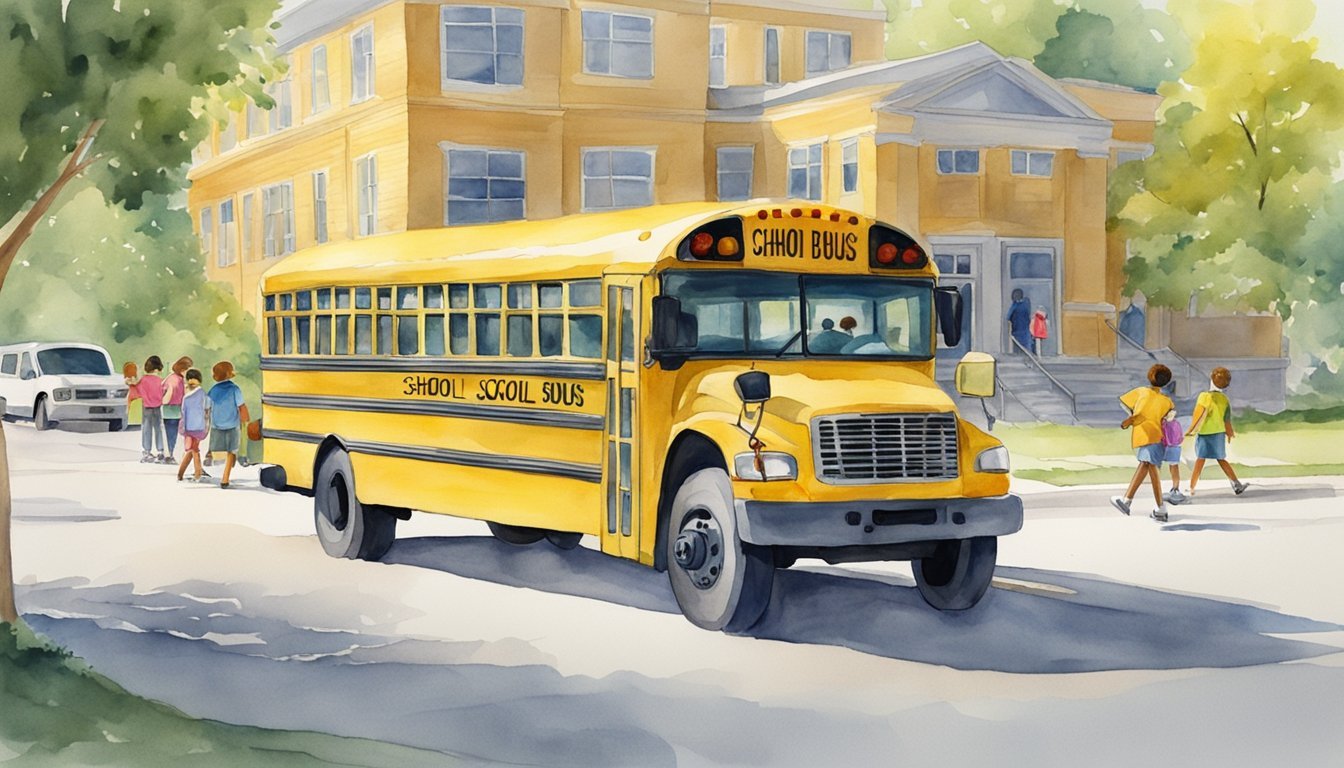History and Development of School Bus Yellow
The distinctive yellow color of school buses, officially known as National School Bus Glossy Yellow, is not merely a random choice but the result of careful consideration and standardization efforts spearheaded by individuals like Frank W. Cyr. This color is integral to the identity and safety of school transportation.
Frank W. Cyr’s Role in Standardization
Often referred to as the “Father of the Yellow School Bus,” Frank W. Cyr was a pivotal figure in the standardization of school buses in the United States. In 1939, Cyr, a professor at Teachers College, Columbia University, organized a conference with the support of the Rockefeller Foundation that brought together representatives from various sectors including education, manufacturing, and paint companies. The outcome of this historic conference was the adoption of a standardized school bus color, among other construction standards that would benefit rural schools across the country. This standardization improved student safety and ensured that school buses were easily recognizable nationwide. Cyr’s efforts had a lasting impact on school transportation, shaping the way millions of children travel to and from school each day. Interestingly, around the same time, people were also asking questions like when were contacts invented, as innovation in various fields was rapidly transforming daily life.
National School Bus Yellow: From Columbia Conference to Federal Standards
Initially named National School Bus Chrome, the color now known as National School Bus Glossy Yellow was selected for its high visibility. The guidelines from this conference were later incorporated into federal standards, making the shade part of the Federal Standard 595a color collection. This color’s purpose was to ensure that school buses could be easily recognized by motorists and pedestrians alike, which was especially important for the safety of children in all sorts of weather conditions and light levels. Eventually, organizations such as the National Highway Traffic and Safety Administration, National Association for Pupil Transportation, and National Congress on School Transportation would all play roles in upholding these standards. The distinctive hue is now synonymous with school transportation in North America and has even been adopted in countries such as Chile and Canada, further solidifying the importance of the Columbia Teachers College conference led by Cyr in setting a vital guideline 17 for school bus design.
Through these efforts, the yellow school bus became not just a mode of transport, but an icon of American education, recognized for its association with safety and reliability in transporting millions of children to and from school every day.
Psychological and Safety Aspects of School Bus Yellow

The distinct shade known as National School Bus Glossy Yellow is specifically chosen for its high visibility and psychological impact on drivers and pedestrians, ensuring that safety remains a foremost priority in school transportation.
Visibility and Attention-Grabbing Features
The color yellow is one of the easiest colors to see from a distance and is quickly discernible to the human eye in peripheral vision due to its high wavelength. This property makes it visible against the backdrop of the road and surrounding environment, be it in bright daylight, during dawn and dusk, or under rain-dimmed conditions. Yellow’s high visibility is leveraged in crafting safety features, as seen with fire trucks and traffic cones. The choice to paint school buses this bright color helps capture the attention of drivers, thus reducing the risk of accidents.
Photoreceptor cells in human eyes are more sensitive to longer wavelengths, which means that yellow, which has a relatively long wavelength, stands out in various lighting conditions and is seen quicker than other colors. In darker settings or when visibility is compromised, the fluorescent lime shade synonymous with school buses stands out markedly, contributing to fewer traffic fatalities. Additionally, black lettering on the school bus yellow is highly readable, further enhancing visibility.
Advancements in Safety Standards and Technology
Originally, yellow was chosen for school buses due to it being high visibility and contrast. Advancements in standards and technology have solidified the status of this distinct yellow as a safety standard. The National Institute of Standards and Technology played a role in maintaining the standard of school bus yellow, ensuring consistency across the American school bus fleet.
The National Highway Traffic Safety Administration (NHTSA) acknowledges that students are far safer when traveling by school buses compared to other modes of transportation. Partially, this is due to the rigorous federal laws that govern school transportation safety features; glossy yellow forms one part of this comprehensive legislation. Ivan Schwab of the American Academy of Ophthalmology has noted that the unique color and design of school buses keep what is considered precious cargo—children—safe in transit. While the paint formulation has evolved over time for health reasons, the commitment to the iconic yellow shade signifies a commitment to students’ security and advances the science of safety in student transportation.

